Backswing Checklist
By Jim McLean
People say the golf swing is all about impact. But it’s what you do before impact that determines if the strike will be any good. Getting into a solid position at the top lets you swing freely on the way down. You don’t have to fight your way back into position.
Let’s look at three things in my backswing here. First, I’ve stayed in my forward tilt toward the ball. My left shoulder is lower than my right. I’ve simply rotated around my spine, so my height hasn’t changed from address. Maintaining this tilt gives me a great chance to return the club precisely to the ball.
Second, my left wrist is flat. The left wrist controls the clubface. If my wrist was cupped (bent back), the face would be open. That turns the downswing into a recovery mission, where you have to try to shut the face or else swing way left to make room for a slice.
Finally, my back leg is braced and supporting most of my weight. This is a big one because from here, I have the leverage to drive toward the target and push off the ground. If the back leg is in a weak position, chances are the upper body will take over coming down—and that’s a killer.
Nail these positions, and the downswing is a lot simpler.
MCLEAN is based at The Biltmore in Coral Gables, Fla.
Source: GolfDigest.com

